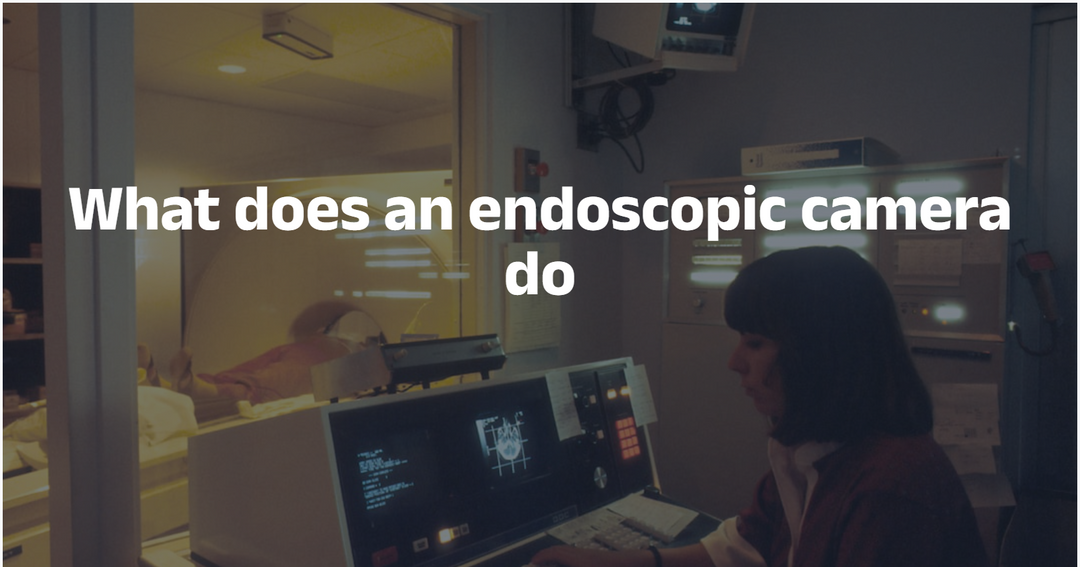Factors When Choosing A Right Thermal Imaging Camera
What is thermal imaging?
Thermal imaging may also be referred to as thermography. It is a technique in which infrared radiation and thermal energy are used to gather information about the object.
As a result, an image is formulated of the subject even in low to no visibility environments. This technology has been used for years, and engineers are making it more advanced each year.
Thermography is an effective form of night-vision technology as it does not rely on visible light. It can work in the complete absence of any visible light, even in smoke, fog, haze, aerosols, dust, and mists. Thermal imaging captures the data at the speed of light and thus is very useful in various applications.
How does thermal imaging work?
Thermal imaging works on the principle of heat, which all objects of the universe emit in the form of infrared radiations. In technical terms, this energy form may also be called "heat signature." Commonly, the hotter an object is, the more infrared radiation it emits.
What is a thermal imaging camera?
Thermal cameras are sophisticated devices that are used to perform the thermal operation. Thermal imagers are highly sensitive heat sensors capable of picking up minute differences in temperature.
Once these cameras gather the data from infrared radiations emitted by the object, they start mapping out a thermal image based on the differences and inflections of the temperature measurements. These generated images are usually grayscale. Black-colored objects are cold, and white-colored objects are hot, while the depth of grey indicates between the two.
However, the new and more advanced thermal imaging camera models can output more colors to help users identify other parameters within the output image - using a color range of orange, blue, yellow, red, and purple.

How a thermal imaging camera works?
Thermal imaging cameras are equipped with intricate and high-sensitivity heat sensors that register the infrared radiations emitted by the object. An infrared camera contains a highly advanced optical system that focuses infrared energy on special detectors, often known as a sensor array. This array includes thousands of detector pixels arranged in a grid manner.
Each pixel in the sensor array then reacts to the infrared energy focused on it and produces an electronic signal. This electronic signal is sent to the camera processor, which applies a mathematical calculation to it and creates a color map of the detected temperature of the object.
Each temperature value is assigned to a different color; thus, the resulting matrix of the color is sent to the camera's memory, and a thermal image is displayed on the camera output screen.
Applications of thermal Imaging
Thermal imaging is used in many aspects. This technology is deployed regularly in scenarios including firefighting, wildlife observations, military purposes, healthcare, computer status, and electrical systems.

So far, we have grasped basic knowledge about thermal imaging and how this technology works. Let us see the important factors when choosing the best thermal imaging camera.
9 Factors when choosing the best thermal imaging camera
A high-quality thermal imaging camera is crucial to detect and record accurate movement and thermography. The following are the essential factors when choosing the thermal imaging camera.
1. Detector resolution
Detector Resolution is one of the most important factors when choosing a thermal imaging camera. The detector resolution, in simpler terms, is the number of pixels that the thermal imager can fill in a particular frame, and simple math says that the more pixels, the more detailed the image will be.
2. Exposure time
Exposure time is the ability of the camera how quickly it can capture a single frame of data which is similar to shutter speed in traditional visible light cameras. This may also be known as shutter interval. The large interval shutter cameras are capable of outputting a clear image and accurate temperature measurements.
3. Temperature range
Temperature range is defined by how cold or hot an object can be in a particular scene. It is quite possible that you may find two extremes of hotness and coldness in one scene. The ability to distinguish between two temperature ranges is a very important factor when choosing a thermal camera.
An aircraft standing idle on the runway will have a body temperature of 25-30°C while the temperature around the engines of the aircraft will have a whopping temperature of 500°C.
4. Temperature Resolution/Thermal Sensitivity
Another important factor when choosing is the temperature resolution of the camera. Temperature resolution is the smallest temperature difference that is measurable and is commonly known as the temperature sensitivity of the camera.
For example, if the temperature sensitivity of the camera is 0.07°, then it can measure the temperature difference between the two surfaces at the interval of 0.07°. Sensitivity is usually measured in milliKelvins.
5. Frame rate
Most IR cameras have a frame rate of 9hz which means that the camera is capable of producing 9 images per second to give the user an almost fluent video. Industrial grade thermal cameras have more frame rate ranges depending upon the usage and application where thermography is being applied.
6. Standard + thermal image (Image Fusion)
Another quality of thermal imaging cameras is their ability to capture a standard image alongside a thermal image for better understanding. In some cases, it is proven to be extremely helpful in understanding a complex scene.
More advanced versions of these cameras are also equipped with a feature known as PiP (Picture in picture). This feature combines the standard and thermal images in one frame.
7. Focus
When capturing thermal imagery, accurate focus is required to get a sharp image of the object and reliably measure temperature. Thermal cameras can be fixed focus, autofocus, or manual focusing. However, high-performing thermal imaging cameras are usually auto or manually focused.

8. Color palettes
Thermal imaging cameras are grayscale cameras, but high quality and better results can be achieved using a thermal camera that outputs the thermal imagery in different colors and hues. High-performing cameras produce colored output in the rainbow, greyscale, and iron oxide red colors.
9. Battery type and battery life
This is an important factor when choosing a thermal camera which is often ignored at large. Having a camera with a large battery and battery indicator on the output screen of the camera is a useful feature. No one wants to stand on the inspection site with no idea of the battery status.
If you have any questions about thermal imaging cameras, please contact us on NOYAFA website.




